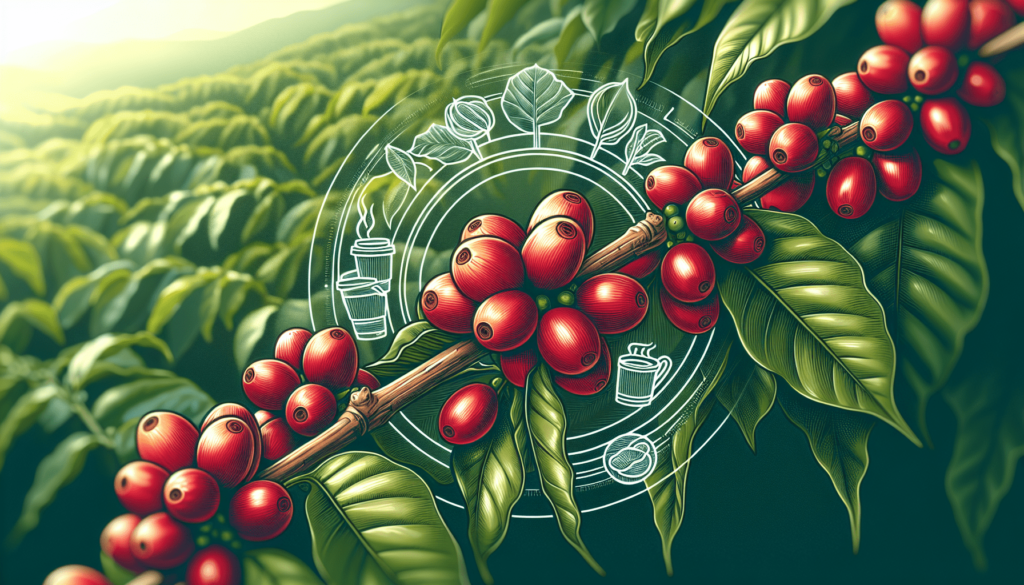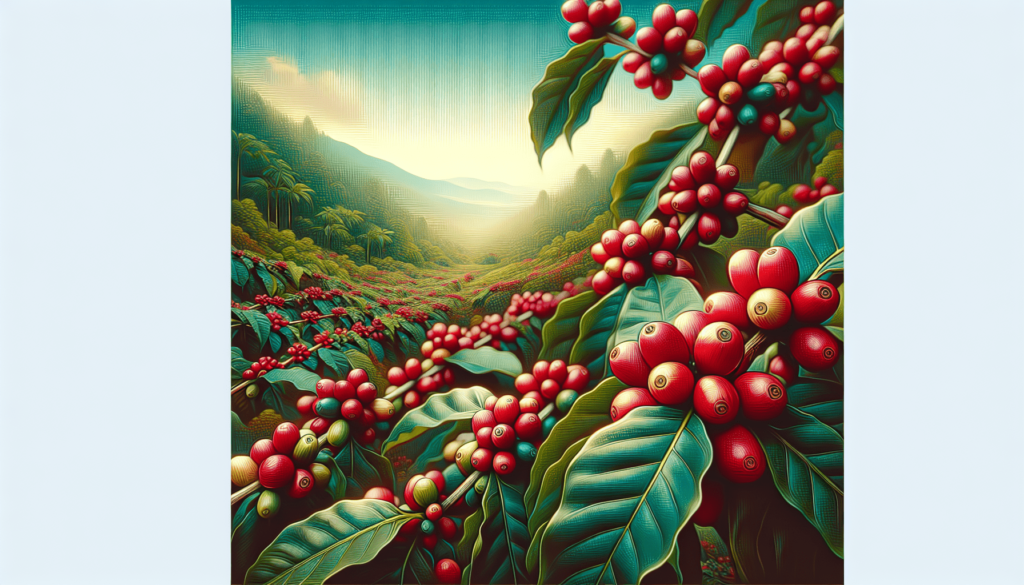Have you ever wondered why a cup of Arabica coffee costs more than a cup of Robusta? As a fellow coffee enthusiast, you might be familiar with the flavors, aromas, and various brewing methods, but the price difference might leave you puzzled. Today, let’s explore why Arabica coffee commands a higher price and what makes it so special in the world of coffee.
Understanding Coffee Varieties
Arabica vs. Robusta
When talking about coffee varieties, the two main players are Arabica (Coffea arabica) and Robusta (Coffea canephora). These two species dominate the coffee market, but they offer different experiences in terms of taste, cultivation, and even economics.
Origin and History
Arabica coffee is believed to have originated in the highlands of Ethiopia and was later cultivated in Yemen. On the other hand, Robusta has its origins in sub-Saharan Africa. Historically, Arabica has been around for much longer and has traditionally been associated with higher-quality coffee.
Flavor Profile
Arabica Flavor
Arabica beans are celebrated for their smooth, complex flavor profile. They tend to have a wider range of tastes, often described with notes like fruity, floral, and nutty. The acidity is higher, which enhances the overall flavor complexity.
Robusta Flavor
Robusta coffee, in contrast, has a stronger, harsher flavor. It is often described as having a more bitter and earthy taste. Robusta contains more caffeine, which contributes to its bolder flavor but often lacks the nuance found in Arabica.

Growing Conditions
Ideal Conditions for Arabica
Arabica coffee plants thrive in higher altitudes, typically between 600 to 2,000 meters above sea level. They prefer temperatures ranging from 15 to 24 degrees Celsius. These plants are more susceptible to pests and diseases, requiring more careful cultivation.
Ideal Conditions for Robusta
Robusta coffee plants are hardier and can grow at lower altitudes, between sea level and 800 meters. They can tolerate higher temperatures, ranging from 24 to 30 degrees Celsius, and are more resistant to diseases and pests.
Cultivation Challenges
Arabica Cultivation
The cultivation of Arabica is labor-intensive and requires a specific set of conditions to ensure a good yield. The altitude, climate, and soil quality need to be just right. Moreover, these plants are susceptible to pests and diseases, making them more challenging to grow.
Robusta Cultivation
Robusta, being more resilient, can grow in a broader range of conditions. Its resistance to pests and diseases makes it easier and cheaper to cultivate, leading to higher yields with less effort.

Harvesting and Processing
Arabica Harvesting
Arabica coffee cherries are typically hand-picked to ensure that only the ripest cherries are collected. This meticulous process contributes to higher production costs.
Robusta Harvesting
Robusta cherries are often mechanically harvested, which is less labor-intensive and thus cheaper. This method, however, can lead to less consistent quality in the final product.
Processing Methods
Both Arabica and Robusta can be processed using various methods such as washed, natural, or honey processing. However, the meticulousness and care taken during processing are generally higher for Arabica, contributing to its higher cost.
Market Demand and Supply
Demand for Arabica
Arabica’s superior flavor profile makes it more sought after in specialty coffee markets. Consumers are willing to pay a premium for the intricate flavors and aromas that Arabica offers.
Demand for Robusta
Robusta is often used in instant coffee and espresso blends, primarily for its higher caffeine content and lower cost. While there is significant demand for Robusta, it is generally positioned in the lower-cost segment of the market.
Supply and Price Dynamics
Given the challenges in cultivation and the meticulous care required for Arabica, its supply is often limited compared to Robusta. This lower supply, combined with higher demand, naturally drives up the price of Arabica coffee.
Economic Factors
Labor Costs
Cultivating and harvesting Arabica coffee require more labor due to the meticulous care in growing conditions and hand-picking methods. Higher labor costs directly contribute to the higher price of Arabica.
Production Costs
The overall production costs for Arabica are higher due to the need for specific growing conditions, pest control, and high-quality processing methods. Conversely, Robusta’s resilience and ease of cultivation lead to lower production costs.
Table: Comparison of Key Factors
| Factor | Arabica | Robusta |
|---|---|---|
| Flavor Profile | Smooth, complex, fruity, floral | Strong, bitter, earthy |
| Growing Altitude | 600 – 2,000 meters | Sea level – 800 meters |
| Temperature Range | 15-24°C | 24-30°C |
| Disease Resistance | Low | High |
| Harvesting Method | Hand-picked | Mechanically harvested |
| Processing Care | High | Moderate |
| Demand | High in specialty markets | Moderate, mainly for blends |
| Supply | Limited | Abundant |
| Labor Costs | High | Low |
| Production Costs | High | Low |
| Price | Expensive | Affordable |
Environmental Impact
Sustainability Practices
Arabica coffee farms are increasingly adopting sustainable farming practices to meet consumer demand for ethically produced coffee. This includes shade-grown coffee, organic farming, and fair-trade certifications, all of which can add to the cost.
Environmental Vulnerability
Arabica plants are more sensitive to climate change and require more careful management to ensure a stable harvest. This vulnerability can lead to fluctuations in supply, further impacting prices.
Robusta and Sustainability
While not as high-profile as Arabica in the specialty market, there are efforts to improve the sustainability of Robusta farms. However, the primary focus has been on maximizing yields and reducing costs.
Consumer Preferences
Taste Preferences
A significant portion of consumers prefer the complex and nuanced flavors of Arabica, making it the coffee of choice for many. This preference drives up demand and, consequently, the price.
Caffeine Content
Robusta’s higher caffeine content finds favor among those looking for a stronger kick in their coffee. However, this is often balanced by lower price points.
Specialty Coffee Shops
Specialty coffee shops predominantly offer Arabica coffee, further cementing its status as a premium product. The emphasis on quality, origin, and brewing methods in these shops adds to Arabica’s allure.
Health Benefits
Antioxidants and Nutrients
Both Arabica and Robusta contain antioxidants and nutrients beneficial to health. However, Arabica is often perceived as being healthier due to its lower caffeine content and milder flavor, which can be easier on the stomach.
Caffeine Content
While Arabica coffee has lower caffeine content compared to Robusta, it is often seen as a plus for those sensitive to caffeine or looking to consume multiple cups a day without jitters.
Final Thoughts
So, why is Arabica coffee more expensive than Robusta? The answer lies in a combination of factors: flavor complexity, challenging cultivation conditions, meticulous harvesting and processing methods, higher labor and production costs, and market demand. All these contribute to making Arabica a premium product that commands a higher price.
Understanding these differences not only enhances your appreciation for this beloved beverage but also guides you in making informed choices based on your taste preferences and budget. Whether you lean towards the nuanced flavors of Arabica or the robust strength of Robusta, knowing the story behind your coffee adds depth to every sip.
